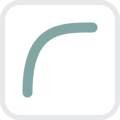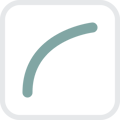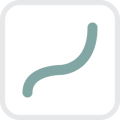What is the difference between each Demand Curve?
Lets take a closer look at the Demand Curves and what defines each one
Front Loaded Curves
Sales occur at the front of the sales cycle, with limited volumes at the end. This may mean that supply is greater than demand, or it may be a reflection of marketing budgets. Likely paired with low acquisition volumes.
Sold out shows are not included in our analysis as the full volume of their demand isn't visible, the convex shape of these curves is related to demand being strongest at the start of the sales cycle and customers choosing not to purchase at the end.

Very Early Demand
The overwhelming majority of demand occurs at the start of the sales cycle and there is a significant drop off in sales before the performance.
Very niche product. High demand within a limited audience.

Early Demand
Sales occur early within the sales cycle and gradually tail off as the performance gets closer.
Strong on sale marketing or a niche, but engaged, market. Limited response to campaign activity at the end of the sales cycle. Possible sign of low marketing spend.
Balanced Curves
There is a clear reaction to both on sale and closing marketing activity in Balanced Curves.

Back Split Demand
Demand is divided between the start and the end of the sales cycle, with the end of the sales period holding the majority.
The volume of acquisition in your audience may be what is tipping the balance of demand towards the end of the sales cycle, or it could be a response to successful marketing campaigns.

Front Split Demand
The balance of demand is leaning towards the start of the sales cycle, but sales at the end are still strong.
Segments of your audience have responded with urgency for this product, while others have been happy to wait until the end.

Steady Demand
Demand is constant through out the sales cycle. There may be some small fluctuations, but the balance between start, middle and end is equal.
It is important to check your ROI on marketing activity if you're seeing audience behaviour like this - are they reacting consistently to your marketing activity, or failing to act at all?
Back Loaded Curves
Demand is focused on the end of the sales cycle. Audience behaviour is driven by campaign related marketing activity and the reaction to on sale announcements is low. These curves suggest low urgency to purchase, a desire to wait for a better deal or high acquisition volumes.
We don't include comps in our analysis, so these curves aren't caused by the act of 'papering' (giving out comps in large quantities) at the end of the sales cycle.

Late Demand
Demand ramps up through out the sales cycle, starting slowly and steadily increasing and peaking at the end of the sales cycle.
Audience engagement in response to campaign activity but limited reaction to on sale marketing announcements.

Very Late Demand
Extremely low demand volumes in the start and middle of the sales cycle, followed by a rush of demand as the sales period closes.
Product with low appeal. Audience reacting strongly to end of campaign marketing, but unresponsive to early actions. Possibly a response to last minute discounting or additional marketing spend.
Anomalous
The majority of show marketing is focused around either the start or end of a sales cycle, but that doesn't mean it can't occur at other points.

Central Demand
Demand peaks in the middle of the sales cycle.
This is likely to be caused by an unexpected or unusual piece of show marketing - a notable cast announcement or headline news story etc.. Only use this curve for sales tracking if you are certain that your audience regularly behaves in this way.